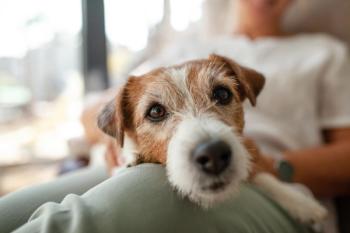
Five tips to help keep your pets safe from poisonings

Don’t wait for an emergency. Here are 5 straightforward tips from Pet Poison Helpline’s Renee Schmid, DVM, DABT, DABVT
Veterinary professionals play a key role in safeguarding companion animals against inadvertent exposures to toxic substances. Equipping clients with precise, evidence‑based recommendations can help reinforce preventive care and reduce the incidence of emergency poisonings. Below are 5 guidelines from Pet Poison Helpline’s Renee Schmid, DVM, DABT, DABVT, that clinicians can readily integrate into client education to enhance in‑home safety.
1. Store all medications out of reach
Keep any medications—yours or your pet’s—up high in a closed‑door cabinet. Even better: install a lock on the cabinet to prevent curious paws or noses from getting inside.
2. Separate human and pet meds
Designate 2 different storage areas—one for human prescriptions/OTCs, one for veterinary formulations—to avoid dangerous mix‑ups when dosing.
3. Lock away toxic foods
Common “people foods” that can be deadly to pets include:
- Chocolate
- Xylitol (in gum, candy, or baked goods)
- Grapes & raisins
- Onions & garlic
Store these safely out of reach (and out of temptation).
4. Vet‑proof your plants
Before bringing any new plant into the home, confirm it’s non‑toxic to pets. Highly dangerous species include:
- Sago palm
- Oxalis (shamrock)
- Lilium & Hemerocallis (true lilies)
Either skip these entirely or keep them completely inaccessible to your animals.
5. Secure rodenticides in approved bait stations
Pets can squeeze into the tiniest nooks and sniff out poisons. Always use tamper‑resistant bait stations specifically designed for rodenticides, and place them where only rodents can reach.
Newsletter
From exam room tips to practice management insights, get trusted veterinary news delivered straight to your inbox—subscribe to dvm360.




